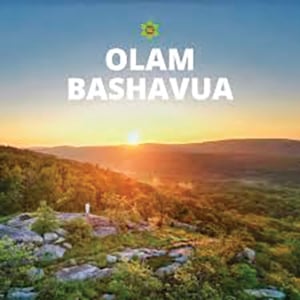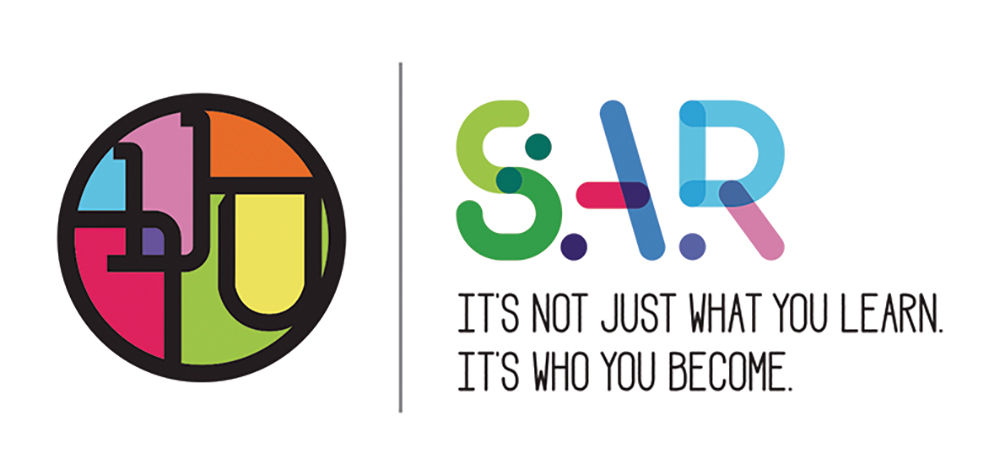Let us first discuss its author. We know his name because of the acrostic that runs through stanzas one through eight: Sh-L-M-H H-L-V-Y: The reference is to Shlomo HaLevy Alkabetz of the 16th century. (That first “lecha” section is not a stanza; it is just the refrain.)
(If any of you ever compose a prayer, please use an acrostic. It will save future scholars all the identification trouble! If only the author of Adon Olam had done so! The identity of the author of this widely recited prayer is still a mystery.)
The ninth stanza of our song begins with בואי. I do not know why the author chose to begin it with ב. (Perhaps it connects loosely with that first section that began with ל, forming the word לב—heart?)
In the first stanza, “shamor” precedes “zachor.” Zachor” is in the decalogue of Shemot and “shamor” is in the one from Devarim. This would imply that “shamor” should precede “zachor.” In fact, there is another “lecha dodi” song by a different author from this era, and it has “zachor” preceding “shamor.” I have seen the suggestion that because our author needed the “shin” to begin the stanza (to form the first letter of שלמה), he had to place “shamor” first.
Rabbi Alkabetz was born in Salonica (Greece) in 1505. He arrived in Eretz Yisrael around 1535 and settled in Safed. He became one of the leading Kabbalists in Safed. His circle included Rabbi Moshe Alshich, Rabbi Yosef Caro and Alkabetz’s brother-in-law, Rabbi Moshe Cordovero. Rabbi Alkabetz died in Safed, in 1584.
Here is a story that occurred in Adrianople, Turkey, a few years before Rabbi Alkabetz arrived in Eretz Yisrael. (Adrianople is named after the Roman emperor, Hadrian.) Rabbi Alkabetz and Rabbi Caro were staying up all night on Shavuot with others doing a tikkun. (This is the earliest recorded report of this custom.) They were visited by a “maggid,” a heavenly spirit that spoke words to the two of them through the mouth of Rabbi Caro. The maggid praised them and told them to move to Erez Yisrael. When they repeated the tikkun on the second night, the maggid appeared again with the same message. A few years later, Rabbi Alkabetz wrote of this experience. Rabbi Caro wrote of many other experiences with this maggid.
Rabbi Alkabetz probably initiated the custom of the kabbalists of Safed going out to the fields to welcome the Sabbath with hymns.
Also, Rabbi Alkabetz used to go with his students to pray and meditate on the graves of tzadikim. He did this because he believed it would help them better understand the secrets of the Zohar.
—
Our song was inspired by certain passages in rabbinic literature. For example, at Shabbat 119a, we are told that towards evening before Shabbat, Rabbi Chanina would don his robe and exclaim: “Come, let us go out to welcome Shabbat HaMalka,” and Rabbi Yannai would put on his garment and exclaim, “bo’ee challah” twice. See also Genesis Rabbah 11:8 which expresses the idea that the Shabbat is the spouse of Israel.
The first two words of the song are borrowed from Shir HaShirim 7:12: “Come my beloved, let us go into the field, let us lodge in the villages.”
The first question raised by the song is who is meant by that second word דודי (my beloved). Some say it is a reference to the Jewish people. But most see it as a reference to God or the “Shechina.” Liturgy expert, Professor Reuven Kimelman agrees. He explains that דודי refers to the Tetragrammaton if we exchange ד for ה (the two letters that stand for God’s name) and then read the four letters backwards.
———
What is most striking about the song is that from the third stanza (“mikdash melech”) through the eighth (“yamin u’semol”) the subject of the song is no longer greeting the Sabbath, but the preparation for the messianic redemption of Jerusalem and the Jewish people. For example, in the third stanza, the city of Jerusalem is told to “arise and depart from amidst the upheaval.” In the fourth, the Jewish people are told: “shake off the dust” (התנערי), arise, put on your splendid clothes, my people … ”
The Complete ArtScroll Siddur postulates that the shift in themes, “is a logical extension of our welcome of the Sabbath, because the Talmud (Shabbos 118b) teaches that the Messiah will come if Israel observes two Sabbaths properly.” It cites the Iyun Tefillah Siddur commentary for this idea.
Rabbi Isaachar Jacobson, in “The Sabbath Service,” page 45, sees the connection slightly differently. “A well-known dictum (Brachot 57b) teaches that Shabbat is a reflection of the world to come. The Jew observing the Sabbath in all its laws and details experiences the feeling of living in a redeemed world … ”
It is also important to understand that the Kabbalah espoused in Safed was eschatological in nature. So, the addition of a messianic redemption theme to this song is not surprising. (Prior to the expulsion from Spain in 1492, the consensus of scholars is that Kabbala was not eschatological in nature. It focused on other themes.)
———
A few brief insights on the song:
Second stanza: “ki hi mekor haberacha:” The Zohar (Yitro) teaches that all the weekday blessings and success come as a result of Sabbath’s holiness.
Second stanza: “nesuchah:” Literally, this word means “anointed.” But it has the connotation of the anointing of kings and queens. That is why it is used here in reference to the Sabbath.
Fourth stanza: It is important to punctuate the first sentence properly. A reasonable approach is: “Hitnaari meiafar, kumi; livshi bigdei tifarteich, ami (“Shake off the dust, arise! Put on your splendid clothes, my people.) This stanza has its source in Isaiah 52:1-2 but the song has rearranged it significantly.
“Hitnaari” is from the root נער. This root has three meanings in Tanach: 1) shake, 2) roar, growl (like a lion, see Jeremiah 51:38) and 3) youth. It is hard to relate them to one another. For example, regarding 1) and 3), here is the attempt of Rabbi Shimshon Rafael Hirsch (commentary to Genesis 8:21): “Youth is called ‘neurim’ because it is the time in which young human beings really want to grow out of themselves … They still regard self-control and obedience to duty as an irksome joke which their natures … ‘shake off.’” This is a brilliant attempt at a connection, but it is too speculative for me.
Seventh stanza: “vehayu limeshisah shosayich:” משסה and שאסיך both come from the same root, שסס or שסה, which means “plunder.” The translation is “Your plunderers will become plunder.” The phrase is adapted from Jeremiah 30:16 which has the words reversed: “vehayu shosayich limeshisah.” There is a ketiv/kri notation on that א in שאסיך, with a comment that it does not belong. (The word order reversal may have helped the author with a rhyme for “mevalayich.”)
Eighth stanza: “yamin usmol tifrotzi” (right and left you shall spread out). This phrase comes from Isaiah 54:3. Here is what follows in the verse after that phrase: “And your seed shall possess the nations and make the desolate cities be inhabited.”
Ninth stanza: “ateret ba’alah” (crown of her husband). This phrase is from Mishlei 12:4: “eshet chayil ateret baalah.” There, the reference is to a wife. In our song, the reference is to the Sabbath.
————————
According to Macy Nulman, “The Encyclopedia of Jewish Prayer,” (1993), page 224, Sephardim who adhere to the customs of Aleppo and Rabbi Ovadia Yosef omit stanzas that reflect aspects of sorrow. Accordingly, ArtScroll’s Edut HaMizrach siddur notes that some omit stanzas 4, 6, 7 and 8.
Professor Kimelman has written an extensive study of our prayer: “The Mystical Meaning of Lecha Dodi” and “Kabbalat Shabbat” (2002, in Hebrew).
Mitchell First can be reached at [email protected]. He is still waiting for a visit by a maggid.











